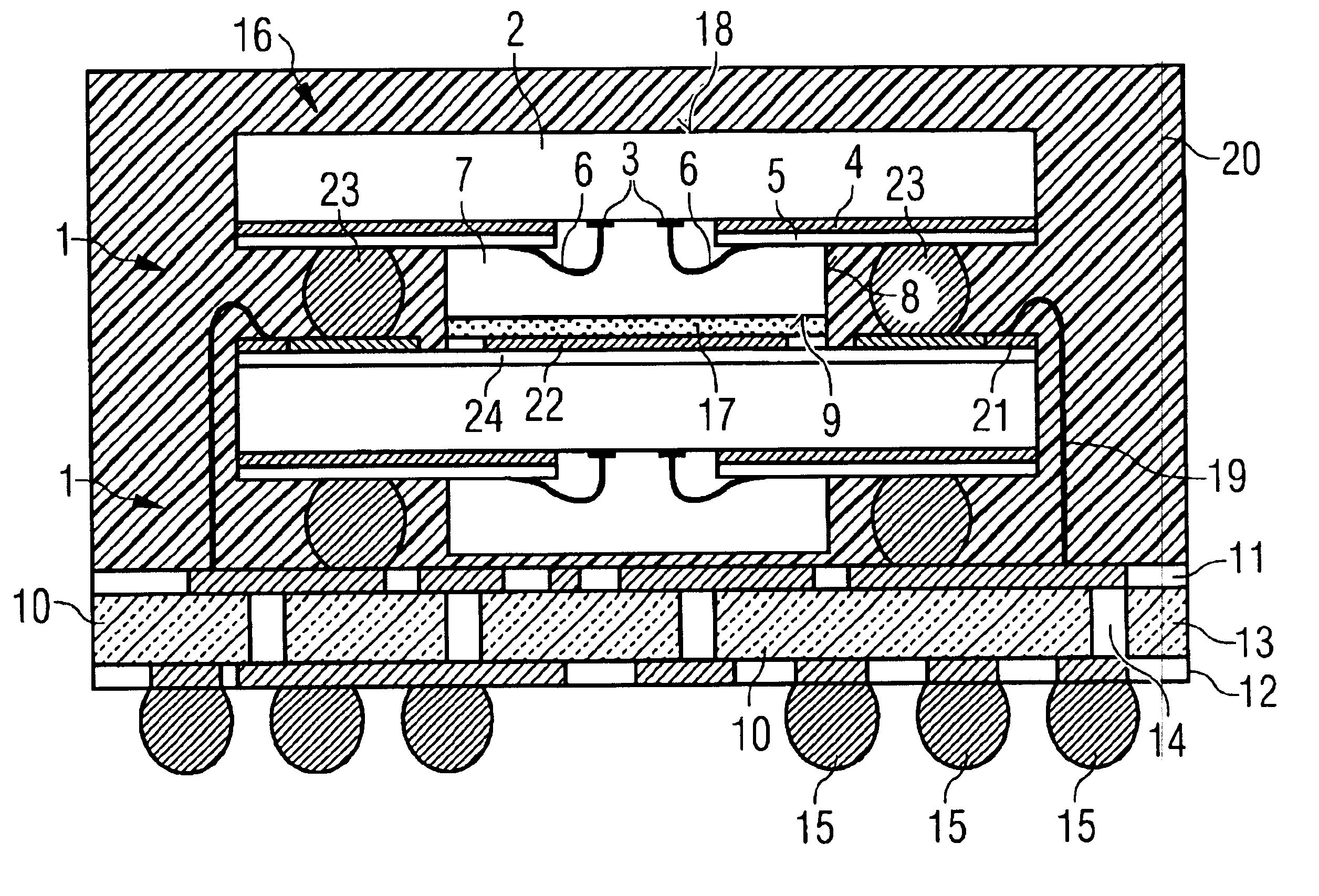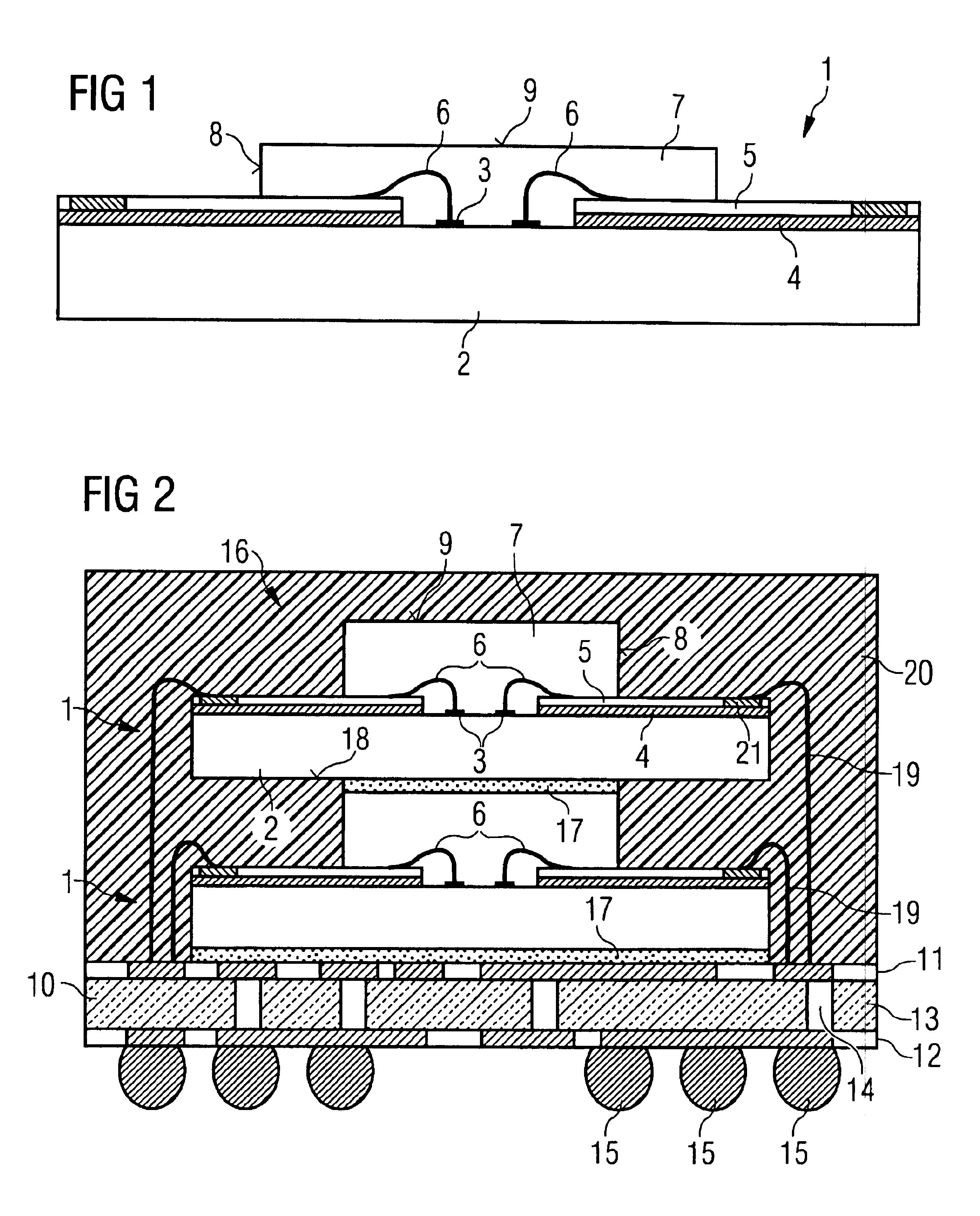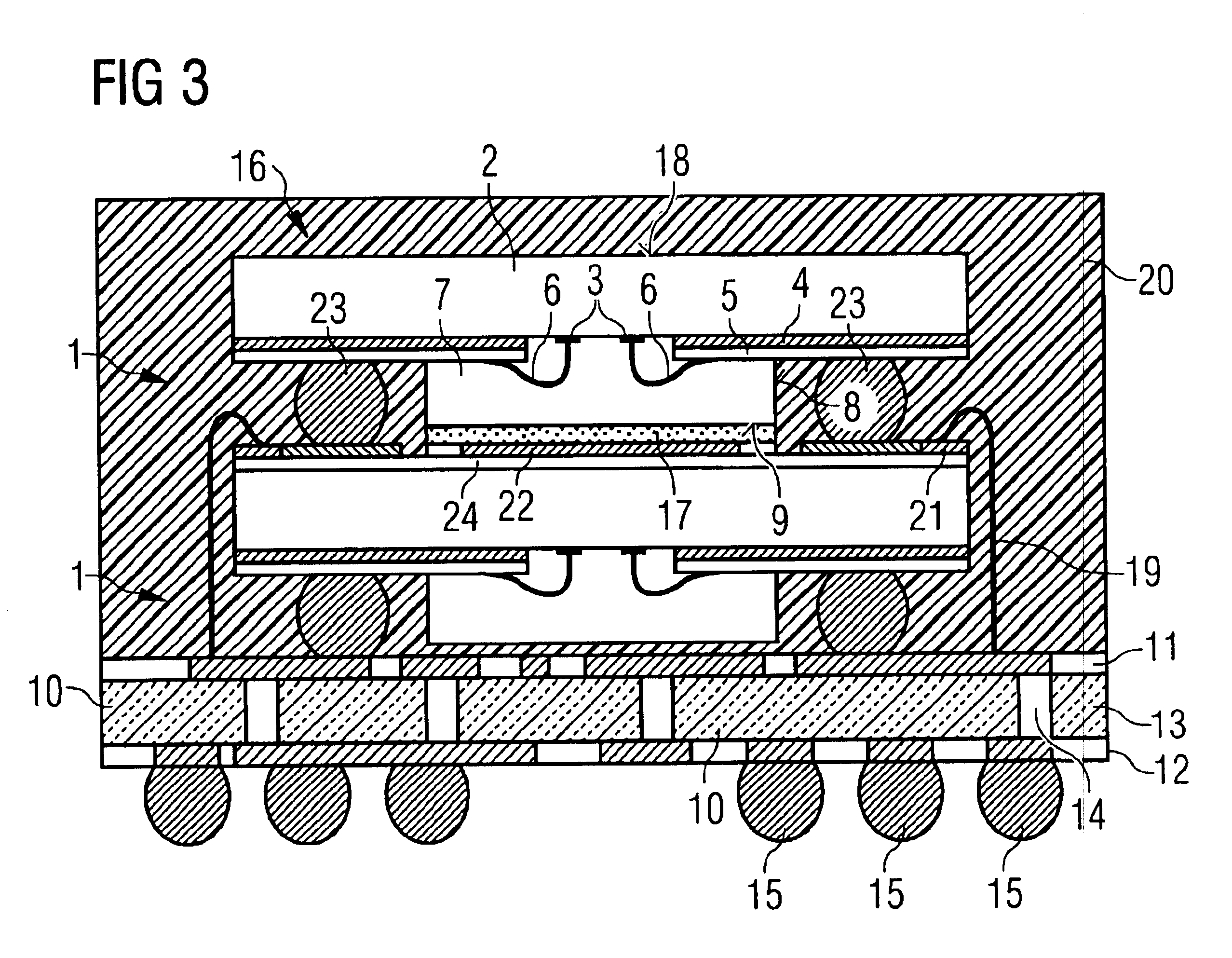Stack arrangement of a memory module
a memory module and stack arrangement technology, applied in the field of stack arrangement of memory modules, can solve the problems of relative high loss rate, and achieve the effects of reducing the number of transistors, and shortening the signal transit tim
- Summary
- Abstract
- Description
- Claims
- Application Information
AI Technical Summary
Benefits of technology
Problems solved by technology
Method used
Image
Examples
Embodiment Construction
[0024]The making and using of the presently preferred embodiments are discussed in detail below. It should be appreciated, however, that the present invention provides many applicable inventive concepts that can be embodied in a wide variety of specific contexts. The specific embodiments discussed are merely illustrative of specific ways to make and use the invention, and do not limit the scope of the invention.
[0025]The present invention will be described with respect to preferred embodiments in a specific context, namely a stacked memory module. The invention may also be applied, however, to other electronic components including other semiconductor devices such as processors and logic devices.
[0026]FIG. 1 shows discrete component 1, which is used to construct a stack arrangement according to embodiments of the present invention, two of which are shown in FIGS. 2 and 3. Discrete component 1 comprises a semiconductor (e.g., memory) chip 2 with double-row central bond pads 3, a metal...
PUM
 Login to View More
Login to View More Abstract
Description
Claims
Application Information
 Login to View More
Login to View More - R&D
- Intellectual Property
- Life Sciences
- Materials
- Tech Scout
- Unparalleled Data Quality
- Higher Quality Content
- 60% Fewer Hallucinations
Browse by: Latest US Patents, China's latest patents, Technical Efficacy Thesaurus, Application Domain, Technology Topic, Popular Technical Reports.
© 2025 PatSnap. All rights reserved.Legal|Privacy policy|Modern Slavery Act Transparency Statement|Sitemap|About US| Contact US: help@patsnap.com



